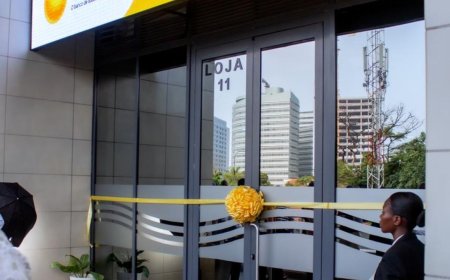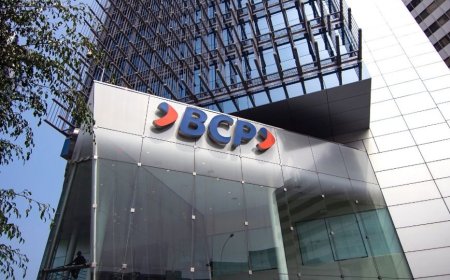Commercial banks reopen credit to households and have already released 5.19 billion Kz until August.
It has been a long time since we saw such encouraging data on the apportionment of credit by commercial banks to individuals. Since the crisis in the oil and economic sector 'swallowed' the purchasing power of companies and households, credit institutions have tightened lending rules and have preferred public debt to consumer loans.
The 23 commercial banks operating in the domestic market closed the month of August with a global stock of credit to the private sector, which includes households, 'hitting' 5.19 trillion Kwanzas, 20.00% more than the total recorded in the 2022 balance sheet, which reveals the return of the banking 'aptetite' in financing households, According to a credit map compiled by the Central Bank.
This value represents the total between the stock released to companies and individuals. That is, the indebtedness of non-financial private companies corresponded to 3.90 billion, with an increase of 498.99 billion Kwanzas (14.67%) and the indebtedness of individuals (households) corresponded to 1.29 billion Kwanzas, with an increase of 366.87 billion Kwanzas (39.48%).
The BNA's statistics do not explain the change in the banks' stance on increasing credit to the private sector (households and companies), nor the origin of credit by bank. To Kieto Economia, a specialist from the Credit office of the Angolan Investment Bank (BAI) justifies it with the improvement of the mechanisms of the concession process and the assisted recovery in credit of previous years.
Kieto Economia knows, from data from the consultancy Deloitte, that Banco BIC continues to lead in the distribution of credit, both for households and for companies. It only loses in public bonds to the state, which is led by the BFA.
It has been a long time since we saw such encouraging data on the apportionment of credit by commercial banks to individuals. This since the crisis of the oil and economic sector 'swallowed' the purchasing power of companies and households, credit institutions have tightened the rules of granting credit and have preferred public debt to consumer loans.
The indebtedness of the non-financial public sector totaled, until August, 599.65 billion Kwanzas, of which 47.64% related to public administration and 52.36% to public companies. Compared to the same period last year, there was a growth of 166.33 billion Kwanzas (38.40%).
Credit to the economy in more than 1 billion Kz
According to central bank statistics, the real sector, in August 2023, gross credit to the non-financial sector allocated to this sector amounted to about 1.33 trillion Kwanzas, representing 22.88% of the total gross credit of the banking sector. Compared to the same period of the previous year, there was an increase of 368.76 billion Kwanzas (38.53%).
The total credit in force granted under the BNA's Notices for the promotion of the real sector totalled 952.47 billion Kwanzas, which corresponded to 71.84% of the total credit to the real sector, higher than the same period of the previous year by 368.76 billion Kwanzas (38.53%), an increase mainly influenced by the "Manufacturing industry" sector.
In the document, the BNA highlights that the total amount of housing credit granted to individuals amounted to 252.70 billion Kwanzas, of which about 53.93 billion Kwanzas were granted under Notice No. 09 of 2023, of August 3, representing 21.34% of the total amount granted.
Commercial banks reopen credit to households and have already released 5.19 billion Kz until August
It has been a long time since we saw such encouraging data on the apportionment of credit by commercial banks to individuals. Since the crisis in the oil and economic sector 'swallowed' the purchasing power of companies and households, credit institutions have tightened lending rules and have preferred public debt to consumer loans.

The 23 commercial banks operating in the domestic market closed the month of August with a global stock of credit to the private sector, which includes households, 'hitting' 5.19 trillion Kwanzas, 20.00% more than the total recorded in the 2022 balance sheet, which reveals the return of the banking 'aptetite' in financing households, According to a credit map compiled by the Central Bank.
This value represents the total between the stock released to companies and individuals. That is, the indebtedness of non-financial private companies corresponded to 3.90 billion, with an increase of 498.99 billion Kwanzas (14.67%) and the indebtedness of individuals (households) corresponded to 1.29 billion Kwanzas, with an increase of 366.87 billion Kwanzas (39.48%).
The BNA's statistics do not explain the change in the banks' stance on increasing credit to the private sector (households and companies), nor the origin of credit by bank. To Kieto Economia, a specialist from the Credit office of the Angolan Investment Bank (BAI) justifies it with the improvement of the mechanisms of the concession process and the assisted recovery in credit of previous years.
Kieto Economia knows, from data from the consultancy Deloitte, that Banco BIC continues to lead in the distribution of credit, both for households and for companies. It only loses in public bonds to the state, which is led by the BFA.
It has been a long time since we saw such encouraging data on the apportionment of credit by commercial banks to individuals. This since the crisis of the oil and economic sector 'swallowed' the purchasing power of companies and households, credit institutions have tightened the rules of granting credit and have preferred public debt to consumer loans.
The indebtedness of the non-financial public sector totaled, until August, 599.65 billion Kwanzas, of which 47.64% related to public administration and 52.36% to public companies. Compared to the same period last year, there was a growth of 166.33 billion Kwanzas (38.40%).
Credit to the economy in more than 1 billion Kz
According to central bank statistics, the real sector, in August 2023, gross credit to the non-financial sector allocated to this sector amounted to about 1.33 trillion Kwanzas, representing 22.88% of the total gross credit of the banking sector. Compared to the same period of the previous year, there was an increase of 368.76 billion Kwanzas (38.53%).
The total credit in force granted under the BNA's Notices for the promotion of the real sector totalled 952.47 billion Kwanzas, which corresponded to 71.84% of the total credit to the real sector, higher than the same period of the previous year by 368.76 billion Kwanzas (38.53%), an increase mainly influenced by the "Manufacturing industry" sector.
In the document, the BNA highlights that the total amount of housing credit granted to individuals amounted to 252.70 billion Kwanzas, of which about 53.93 billion Kwanzas were granted under Notice No. 09 of 2023, of August 3, representing 21.34% of the total amount granted.
What's Your Reaction?













































